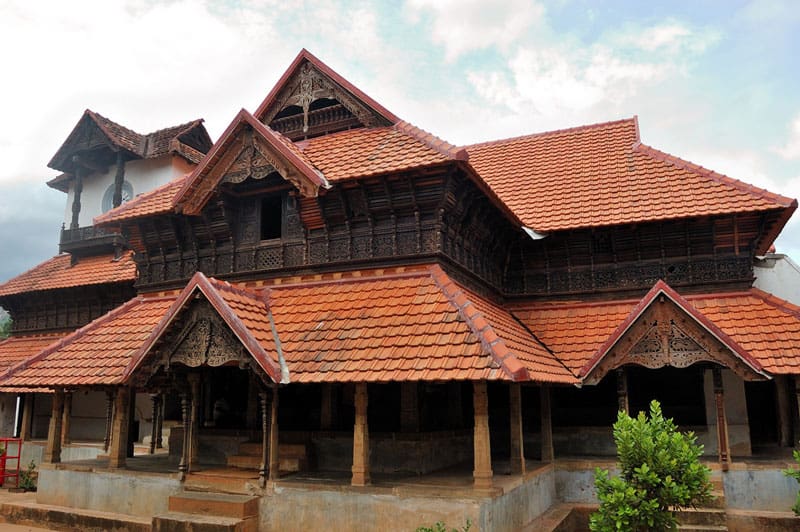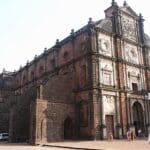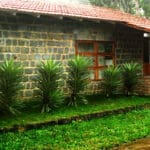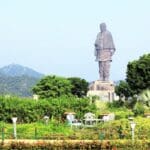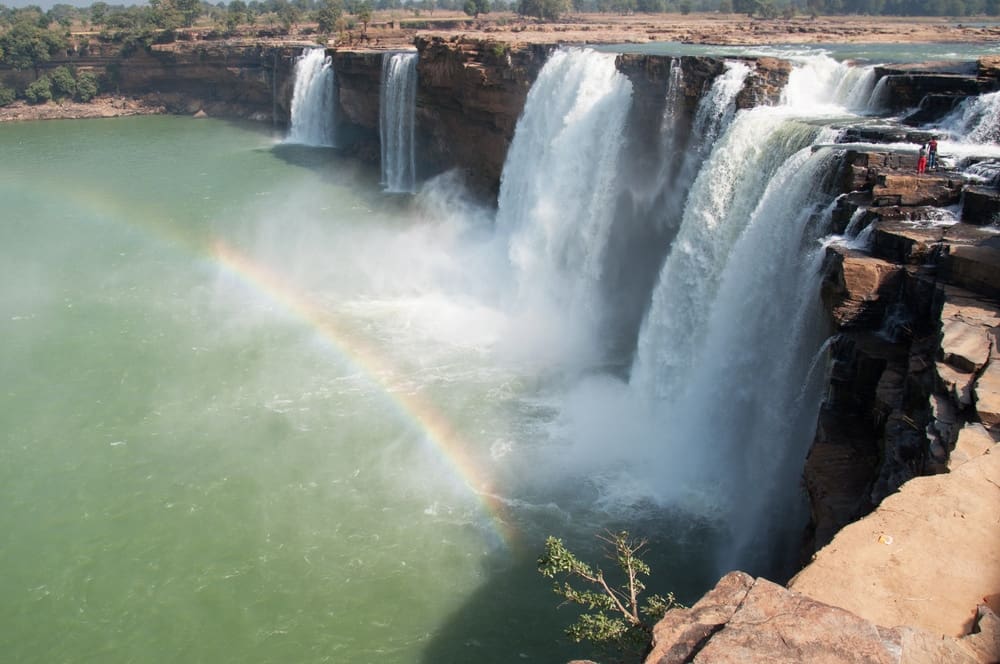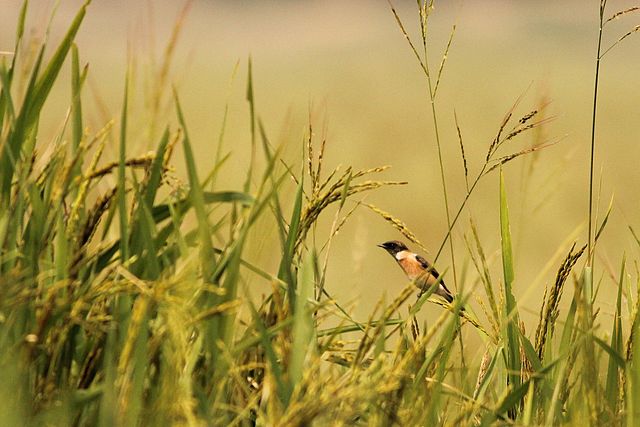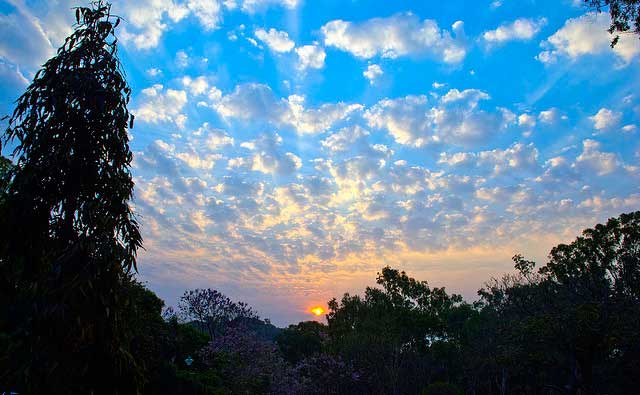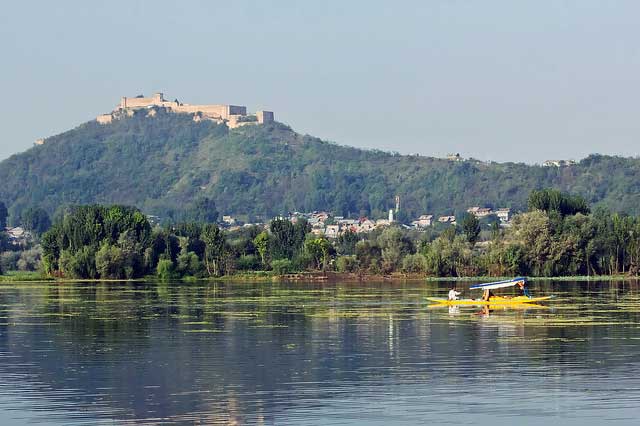Kerala, often referred to as “God’s Own Country,” is a land where history, culture, and architectural brilliance converge to create an unparalleled travel experience. The state’s palaces in Kerala stand as timeless testaments to its royal past, blending traditional Kerala architecture with influences from colonial powers like the Portuguese, Dutch, and British. These majestic structures, steeped in history and adorned with intricate designs, offer travelers a glimpse into the opulent lives of Kerala’s erstwhile rulers. In this comprehensive guide, we explore the top 5 popular palaces in Kerala, delving into their historical significance, architectural splendor, and cultural importance. From the serene Kanakakunnu Palace to the grand Padmanabhapuram Palace, join us on a royal journey through Kerala’s heritage.
1. Kanakakunnu Palace: A Symbol of Travancore Elegance
Historical Significance of Kanakakunnu Palace
Nestled in the heart of Thiruvananthapuram, the capital city of Kerala, Kanakakunnu Palace is a masterpiece of Travancore royalty. Constructed in the early 20th century by Sree Moolam Thirunal, the palace was designed to host lavish banquets, particularly for non-vegetarian feasts, which were considered unconventional by the vegetarian royal family. This architectural gem, set against the backdrop of lush gardens and sprawling grounds, reflects the grandeur of the Travancore dynasty while showcasing Kerala’s ability to blend tradition with innovation.
The palace’s historical role extended beyond mere entertainment. It served as a cultural hub, hosting dignitaries, royal guests, and significant events. Today, it remains a vibrant center for cultural festivals, including the renowned Nishagandhi Dance Festival, which attracts artists and enthusiasts from across India. The palace’s location, just 3 km from Thiruvananthapuram Central Railway Station, makes it an accessible starting point for exploring Kerala’s royal heritage.
Architectural Marvels of Kanakakunnu Palace
Kanakakunnu Palace is a stellar example of traditional Kerala architecture, characterized by sloping roofs, intricate woodwork, and open courtyards. The palace’s design incorporates elements of the nalukettu style, a traditional Kerala architectural form with four wings surrounding a central courtyard. The red-tiled roofs, supported by carved wooden beams, create a striking visual contrast against the whitewashed walls.
The interiors are equally captivating, adorned with crystal chandeliers, antique furniture, and polished wooden floors that reflect the opulence of the Travancore era. The palace’s sprawling lawns, dotted with manicured gardens and fountains, provide a serene setting for visitors. The open-air Nishagandhi and Sooryakanthi auditoriums, located within the palace complex, host cultural performances, adding to its allure as a living heritage site.
Visiting Kanakakunnu Palace
- Timings: Open daily from 10:00 AM to 5:00 PM, except Mondays.
- Entry Fee: Free for general visitors; nominal charges for special events.
- Highlights: Cultural festivals, lush gardens, and historical exhibits.
- How to Reach: Easily accessible by road, 3 km from Thiruvananthapuram Central Railway Station or 7 km from Trivandrum International Airport.
Visitors can explore the palace grounds, attend cultural events, or simply soak in the tranquil ambiance. The proximity to other attractions like the Napier Museum and Sree Padmanabhaswamy Temple makes it a must-visit destination for history buffs and cultural enthusiasts alike.
2. Padmanabhapuram Palace: A Wooden Wonder of Travancore
A Historical Jewel in Kerala’s Crown
Located in Kanyakumari district, Tamil Nadu, but maintained by the Kerala government, Padmanabhapuram Palace is one of the most iconic palaces in Kerala. Built in the 16th century by the Travancore rulers, this sprawling wooden palace served as the seat of power for the Travancore dynasty until the capital shifted to Thiruvananthapuram. The palace’s historical significance lies in its role as the administrative and cultural center of the Travancore kingdom, housing treasures, royal artifacts, and intricate artworks.
The palace complex, enclosed within a 4-km-long granite fortress, spans over 6 hectares and includes over 100 chambers, each designed for specific purposes, such as royal residences, council halls, and prayer rooms. The palace’s name, derived from Lord Padmanabha, reflects its deep spiritual connection to the Sree Padmanabhaswamy Temple.
Architectural Brilliance of Padmanabhapuram Palace
Padmanabhapuram Palace is a masterpiece of traditional Kerala architecture, renowned for its extensive use of teakwood and rosewood. The palace’s nalukettu and ettukettu designs feature interconnected courtyards, slanting roofs, and intricately carved wooden ceilings. The Upparikka Malika (upper storey) is a highlight, with its four chambers serving as a treasury, royal sleeping quarters, meditation room, and shrine. The 18th-century murals, depicting scenes from Hindu mythology, remain remarkably well-preserved, showcasing the artistic prowess of the era.
The Pumukham (reception hall) features a polished granite bed and a carved rosewood ceiling with 90 distinct floral patterns, a testament to Kerala’s craftsmanship. The Durbar Hall, with its black marble-like flooring and circular wooden columns, exudes regal elegance. The palace also houses a secret underground passage, adding an element of intrigue to its history.
Visiting Padmanabhapuram Palace
- Timings: Open from 9:00 AM to 4:30 PM, closed on Mondays.
- Entry Fee: INR 10 for Indian nationals, INR 50 for foreigners; additional charges for photography.
- Highlights: 17th- and 18th-century murals, wooden carvings, and the Durbar Hall.
- How to Reach: 55 km from Thiruvananthapuram, accessible via NH66; nearest railway station is Nagercoil (15 km).
A visit to Padmanabhapuram Palace offers a deep dive into Kerala’s royal past, with guided tours providing insights into its history and architecture. The palace’s serene surroundings and historical artifacts make it a must-visit for anyone exploring the palaces in Kerala.
3. Hill Palace: Kerala’s Largest Archaeological Museum
A Royal Refuge Turned Cultural Hub
Situated in Tripunithura, Kochi, Hill Palace is the largest archaeological museum in Kerala and a significant landmark among the palaces in Kerala. Built in 1865 by the Maharaja of Cochin, the palace served as a safe haven for the royal family, particularly women and children, during times of conflict. In 1980, the palace was handed over to the Kerala government and transformed into a museum, preserving the legacy of the Cochin royal family.
The palace complex, sprawling over 54 acres, comprises 49 buildings, each showcasing traditional Kerala architecture. The museum houses an extensive collection of royal artifacts, including a gold crown weighing 1.75 kg, gifted by King Emmanuel of Portugal, as well as paintings, sculptures, and coins from various eras.
Architectural and Cultural Highlights
Hill Palace exemplifies traditional Kerala architecture with its gabled roofs, wooden beams, and spacious courtyards. The main palace, a two-story structure, features Italian marble floors and intricately carved ceilings. The museum’s 17 galleries display a diverse range of artifacts, from Bronze and Iron Age relics to royal regalia, including ornaments, weapons, and a rare Sanskrit Bible written on goat skin.
The palace’s lush gardens, dotted with rare medicinal plants and fountains, add to its charm. The horse cart and weapon galleries are particularly fascinating, offering a glimpse into the royal lifestyle and military history of the Cochin dynasty. The palace’s serene ambiance and historical treasures make it a cultural hotspot for visitors.
Visiting Hill Palace
- Timings: Open from 9:00 AM to 12:30 PM and 2:00 PM to 4:30 PM, closed on Mondays.
- Entry Fee: INR 20 for Indian nationals, INR 100 for foreigners.
- Highlights: Archaeological museum, royal artifacts, and landscaped gardens.
- How to Reach: 12 km from Ernakulam; accessible via Cochin International Airport (30 km) or Ernakulam Railway Station.
Hill Palace is a treasure trove for history enthusiasts, offering a comprehensive look at Kerala’s royal heritage through its well-curated exhibits and stunning architecture.
4. Krishnapuram Palace: A Blend of Royalty and Art
Historical Context of Krishnapuram Palace
Located in Kayamkulam, near Alappuzha, Krishnapuram Palace is an 18th-century marvel built by Anizham Thirunal Marthanda Varma, the Travancore king. This palace, originally the residence of the Kayamkulam rulers, was transformed into a museum under the Kerala Archaeological Department. Known for its serene setting and historical significance, Krishnapuram Palace is a key attraction among the palaces in Kerala, offering insights into the region’s royal and cultural past.
The palace’s strategic location near the Krishnaswamy Temple and its large pond, home to lotus flowers and white swans, enhances its picturesque appeal. The underground escape route, designed for emergencies, adds a layer of mystery to its history.
Architectural and Artistic Treasures
Krishnapuram Palace is a quintessential example of Kerala’s pathinarukettu architecture, featuring gabled roofs, dormer windows, and narrow corridors. The palace’s museum houses an impressive collection of artifacts, including the famous Gajendra Moksham mural, the largest single-panel mural in Kerala, depicting Lord Vishnu granting salvation to the elephant king Gajendra. This 18th-century artwork, located near the palace’s pond, is a highlight for art lovers.
The museum also showcases traditional Kerala weaponry, such as the Kayamkulam Vaal (double-edged sword), ancient coins, bronze sculptures, and stone inscriptions. The palace’s airy interiors, designed without artificial lighting, demonstrate the ingenuity of Kerala’s architects in creating naturally lit spaces.
Visiting Krishnapuram Palace
- Timings: Open from 9:00 AM to 5:00 PM, closed on Mondays.
- Entry Fee: INR 10 for Indian nationals, INR 50 for foreigners.
- Highlights: Gajendra Moksham mural, traditional weaponry, and lotus pond.
- How to Reach: 47 km from Alappuzha; nearest railway station is Kayamkulam (5 km), and Thiruvananthapuram International Airport is 103 km away.
Krishnapuram Palace offers a serene escape into Kerala’s royal and artistic heritage, making it an essential stop for those exploring the state’s cultural landmarks.
5. Mattancherry Palace: A Fusion of Kerala and Colonial Styles
A Historical Gift from the Portuguese
Located in the vibrant neighborhood of Mattancherry, Kochi, Mattancherry Palace, also known as the Dutch Palace, is a testament to Kerala’s colonial history. Built by the Portuguese in 1555 as a gift to Raja Veera Kerala Varma of Cochin, the palace was later renovated by the Dutch in 1663, earning its moniker. This iconic palace, one of the most visited palaces in Kerala, blends traditional Kerala architecture with European influences, creating a unique cultural landmark.
The palace’s central courtyard houses a temple dedicated to Pazhayannur Bhagavati, the protective deity of the Cochin royal family, reflecting its deep spiritual roots. The palace served as a residence for the Cochin rulers and a venue for significant ceremonies, including the Ariyittuvazhcha coronation rituals.
Architectural and Artistic Splendor
Mattancherry Palace is a classic example of the nalukettu style, with four wings surrounding a central courtyard. The double-story structure features sloping roofs, wooden beams, and Kerala-style flooring that resembles black marble. The palace’s highlight is its collection of 16th-century murals, which adorn the walls of the royal chambers and depict scenes from Hindu epics like the Ramayana and Mahabharata. These vibrant artworks, painted with natural pigments, remain remarkably well-preserved.
The museum within the palace showcases royal artifacts, including portraits of the Cochin Rajas, ceremonial robes, and traditional weapons. The Durbar Hall, with its ornate ceiling and intricate carvings, exudes regal charm, while the palace’s proximity to Kochi’s backwaters adds to its scenic allure.
Visiting Mattancherry Palace
- Timings: Open from 10:00 AM to 5:00 PM, closed on Fridays.
- Entry Fee: INR 5 for Indian nationals, free for children under 15.
- Highlights: Hindu mythology murals, royal artifacts, and Bhagavati temple.
- How to Reach: Located in Mattancherry, Kochi; 10 km from Ernakulam Railway Station and 40 km from Cochin International Airport.
Mattancherry Palace is a must-visit for those seeking to explore the cultural and colonial heritage of Kerala, offering a perfect blend of art, history, and architecture.
Why Visit Kerala’s Palaces?
The palaces in Kerala are more than just architectural marvels; they are windows into the state’s rich history and cultural diversity. Each palace tells a unique story of royalty, resilience, and artistic excellence, reflecting the influences of Kerala’s royal dynasties and colonial rulers. From the wooden grandeur of Padmanabhapuram to the artistic treasures of Krishnapuram, these palaces offer a comprehensive exploration of Kerala’s heritage.
Cultural Significance
Kerala’s palaces are living heritage sites, hosting cultural events, festivals, and exhibitions that keep the state’s traditions alive. The Nishagandhi Dance Festival at Kanakakunnu Palace, for instance, showcases classical Indian dance forms, while the museums at Hill and Krishnapuram Palaces preserve artifacts that narrate Kerala’s history. These palaces are also spiritual centers, with temples and shrines that reflect the deep-rooted faith of Kerala’s royalty.
Architectural Diversity
The palaces showcase a blend of traditional Kerala architecture, characterized by nalukettu and ettukettu designs, with colonial influences from the Portuguese, Dutch, and British. This fusion creates a unique aesthetic, with sloping roofs, wooden carvings, and vibrant murals that distinguish Kerala’s palaces from those in other parts of India. The use of natural materials like teakwood and rosewood, combined with innovative designs for ventilation and lighting, highlights the ingenuity of Kerala’s architects.
Tourism Appeal
For travelers, the palaces in Kerala offer a multifaceted experience, combining history, art, and natural beauty. Whether you’re a history enthusiast, an architecture lover, or a photography buff, these palaces provide ample opportunities to explore, learn, and capture stunning visuals. Their accessibility, with most located near major cities and transport hubs, makes them ideal additions to any Kerala itinerary.
Travel Tips for Visiting Kerala’s Palaces
- Plan Your Visit: Check palace timings and closures (most are closed on Mondays). Plan visits during cooler months (October to March) for a comfortable experience.
- Guided Tours: Opt for guided tours to gain deeper insights into the history and architecture of each palace. Local guides often share fascinating anecdotes.
- Photography: Carry a camera, as most palaces allow photography (some with additional fees). Respect restrictions in sensitive areas like temples.
- Cultural Events: Time your visit to coincide with festivals like the Nishagandhi Dance Festival at Kanakakunnu Palace for a cultural immersion.
- Comfortable Attire: Wear comfortable clothing and shoes, as exploring palace grounds involves walking. Modest attire is recommended for temple visits.
- Transportation: Use local taxis, auto-rickshaws, or rental cars for easy access. Public transport is available but may require additional planning.
- Respect Heritage: Avoid touching artifacts or murals to preserve these historical treasures for future generations.
15 FAQs About Visiting Palaces in Kerala
- What are the top palaces to visit in Kerala?
The top palaces include Kanakakunnu Palace, Padmanabhapuram Palace, Hill Palace, Krishnapuram Palace, and Mattancherry Palace. - What is the best time to visit Kerala’s palaces?
The ideal time is from October to March, when the weather is cool and pleasant. - Are Kerala’s palaces accessible by public transport?
Yes, most palaces are near major cities and accessible by bus, taxi, or auto-rickshaw. Check local transport options for remote palaces like Padmanabhapuram. - Do Kerala’s palaces have entry fees?
Yes, entry fees range from INR 5 to INR 100, depending on the palace and visitor nationality. Children often enter free or at discounted rates. - Are photography and videography allowed inside the palaces?
Photography is permitted in most palaces, sometimes with additional fees. Videography may have restrictions in certain areas. - What is the architectural style of Kerala’s palaces?
Most palaces feature traditional Kerala architecture (nalukettu or ettukettu) with colonial influences from Portuguese, Dutch, or British styles. - Are guided tours available at Kerala’s palaces?
Yes, guided tours are available at most palaces, offering detailed insights into their history and architecture. - What cultural events are hosted at Kerala’s palaces?
Events like the Nishagandhi Dance Festival at Kanakakunnu Palace and cultural exhibitions at Hill Palace are popular. - Are there dining options near Kerala’s palaces?
Nearby cities like Thiruvananthapuram, Kochi, and Alappuzha offer restaurants serving Kerala cuisine and international dishes. - Can I visit multiple palaces in one day?
Yes, palaces in the same city (e.g., Kanakakunnu and Kuthiramalika in Thiruvananthapuram) can be visited together with proper planning. - Are Kerala’s palaces suitable for children?
Yes, the palaces are family-friendly, with open spaces and educational exhibits that appeal to children. - Do Kerala’s palaces have facilities for disabled visitors?
Some palaces, like Hill Palace, have partial accessibility. Contact the palace administration for specific details. - What should I wear when visiting Kerala’s palaces?
Wear comfortable, modest clothing and shoes suitable for walking. Cover shoulders and knees for temple visits. - Are there restrictions on touching artifacts in the palaces?
Yes, touching artifacts or murals is prohibited to preserve their condition. - How can I learn more about Kerala’s royal history?
Visit palace museums, take guided tours, or explore resources at the Kerala State Archaeology Department.


